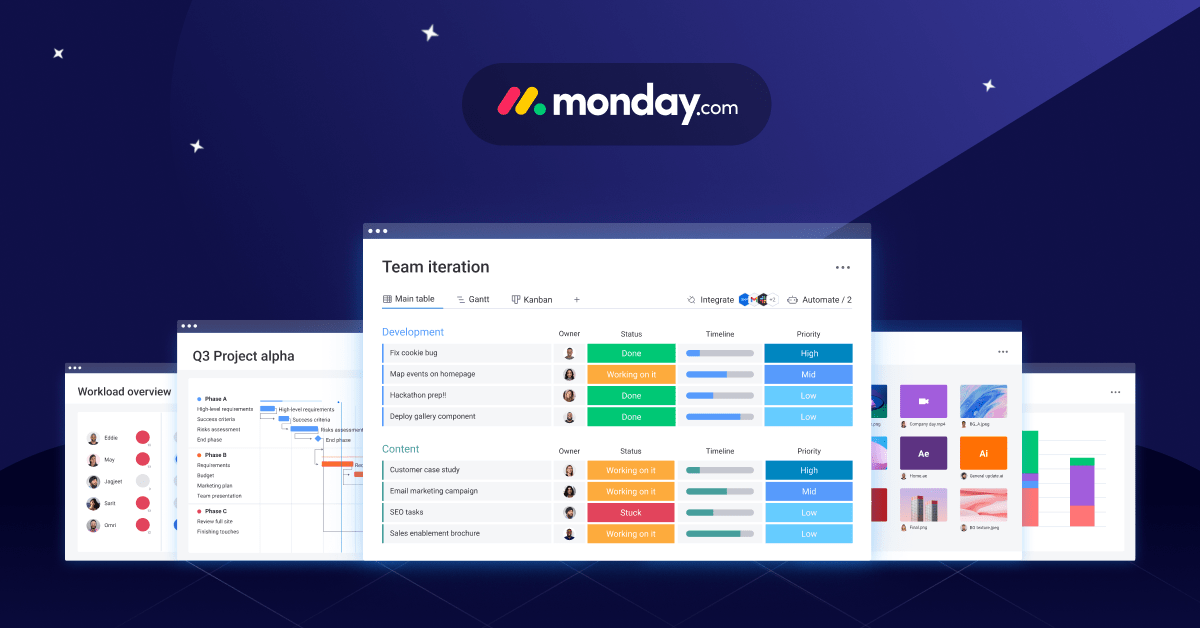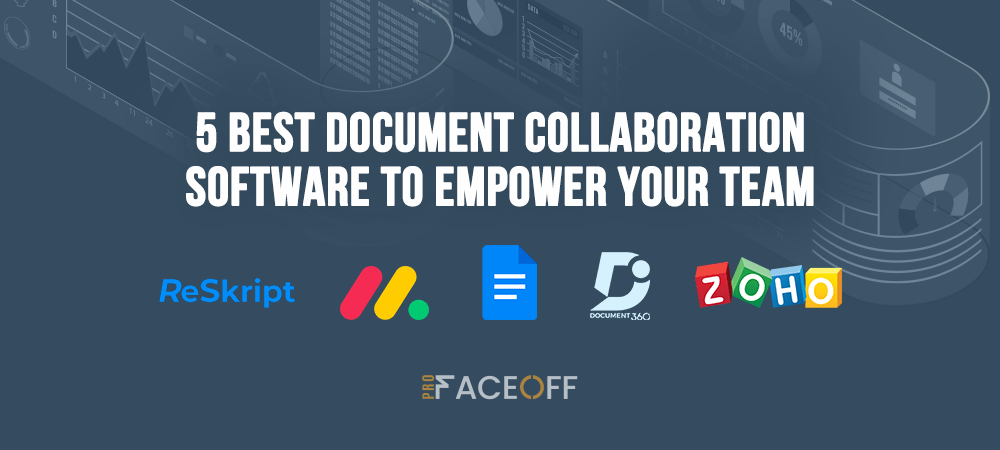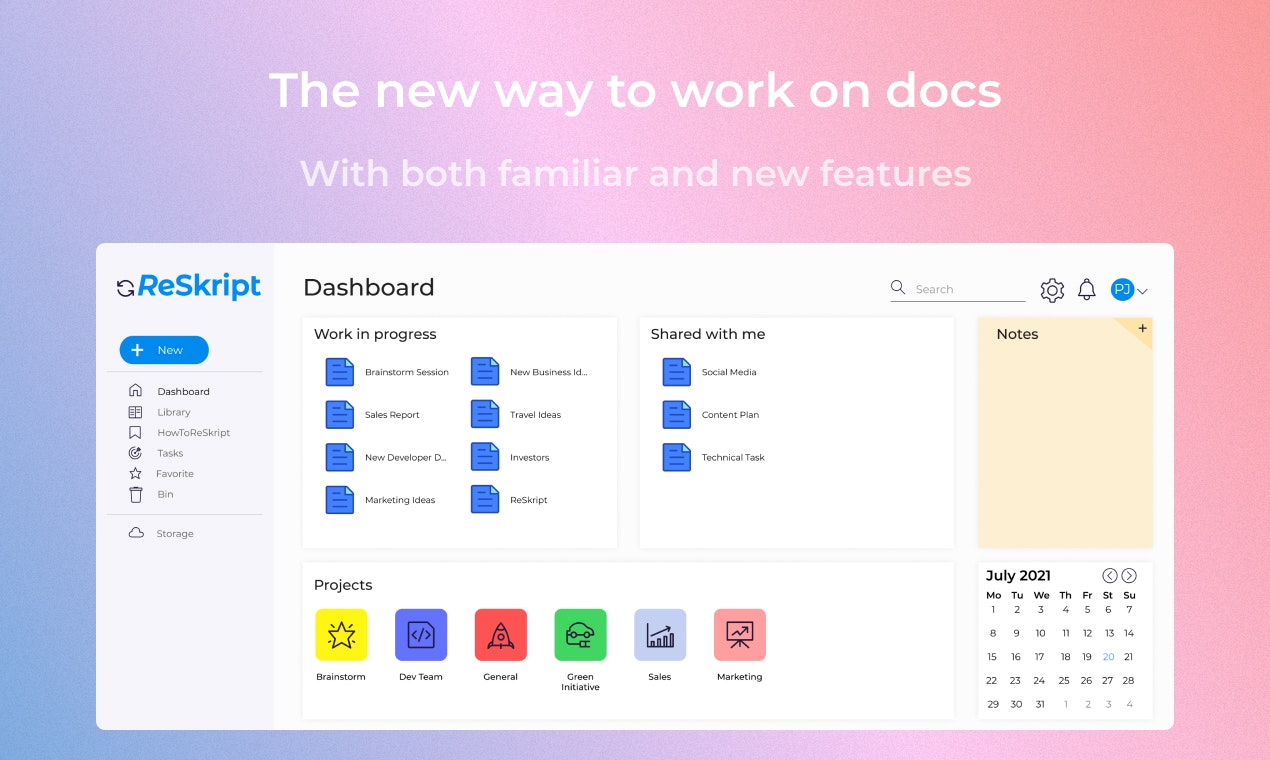Best document collaboration software for teams: Enhancing Team Productivity
Exploring the realm of document collaboration software for teams, this introduction sets the stage for a comprehensive discussion on how these tools revolutionize teamwork. From streamlining communication to boosting efficiency, the impact of such software is profound and far-reaching.
As we delve deeper, we uncover the key features that make these tools indispensable for modern teams striving for seamless collaboration and productivity.
Introduction to Document Collaboration Software

Document collaboration software is a tool that allows teams to work together on creating, editing, and sharing documents in real-time, regardless of their physical location. This software enables multiple users to collaborate on projects, share feedback, and make changes simultaneously, streamlining the workflow and enhancing productivity.
Importance of Using Document Collaboration Software for Teams
Document collaboration software plays a crucial role in improving communication and coordination among team members. By providing a centralized platform for document sharing and editing, it eliminates the need for back-and-forth emails or multiple versions of the same document. This results in faster decision-making, increased efficiency, and reduced errors.
- Enhanced Productivity: Collaboration software allows team members to work together seamlessly, leading to quicker project completion and improved efficiency.
- Real-Time Updates: Users can see changes made by others instantly, ensuring everyone is on the same page and reducing the risk of miscommunication.
- Version Control: Document collaboration software maintains a history of document revisions, making it easy to track changes and revert to previous versions if needed.
Examples of Industries Where Document Collaboration Software is Crucial
Document collaboration software is essential in various industries where teamwork and efficient document management are paramount. Some examples include:
- Marketing and Advertising: Teams working on campaigns need to collaborate on creative materials, strategies, and client presentations.
- Legal Services: Law firms require secure document sharing and collaboration tools to work on contracts, briefs, and case files with multiple team members.
- Engineering and Architecture: Collaboration software is crucial for sharing design plans, blueprints, and project timelines among team members.
Key Features to Consider
When choosing the best document collaboration software for teams, there are several key features to consider that can greatly enhance productivity and efficiency in working together on documents. Real-time editing and version control are two essential features that any top-notch collaboration software should have.
Real-Time Editing
Real-time editing allows team members to work on a document simultaneously, seeing changes made by others in real-time. This feature promotes seamless collaboration as team members can edit, comment, and discuss changes in the document as they happen. It eliminates the need for sending multiple versions back and forth via email, streamlining the editing process and ensuring that everyone is on the same page.
- Facilitates instant feedback and communication among team members.
- Prevents version control issues by providing a single, up-to-date version of the document.
- Increases efficiency and reduces time wasted on waiting for edits or updates.
Version Control
Version control is crucial in document collaboration software as it allows users to track changes, revert to previous versions, and ensure that the most recent version of the document is always accessible. This feature helps in maintaining the integrity of the document and avoiding conflicts that may arise from multiple versions being circulated within the team.
- Tracks changes made by each team member, providing transparency and accountability.
- Enables easy identification of the most recent version of the document.
- Helps in recovering lost or deleted content by accessing previous versions.
Top Document Collaboration Software Options
When it comes to document collaboration software, there are several top options available in the market. Let's take a closer look at some of the popular choices like Google Workspace, Microsoft 365, and Zoho Docs, highlighting their strengths, weaknesses, pricing plans, and scalability options.
Google Workspace
Google Workspace, formerly known as G Suite, is a cloud-based platform that offers a range of productivity tools for teams to collaborate on documents, spreadsheets, and presentations in real-time. One of its key strengths is the seamless integration with other Google services like Gmail, Google Drive, and Google Calendar.
However, some users may find the user interface to be less intuitive compared to other options. Google Workspace offers flexible pricing plans based on the number of users and storage requirements, making it scalable for teams of all sizes.
Microsoft 365
Microsoft 365, previously known as Office 365, is another popular choice for document collaboration, offering a suite of applications like Word, Excel, and PowerPoint. One of its strengths is the familiarity of its tools, as many users are already accustomed to using Microsoft products.
However, some users may find the pricing to be on the higher side compared to other options. Microsoft 365 provides various subscription plans tailored to different business needs, allowing for scalability based on the size of the team.
Zoho Docs
Zoho Docs is a cloud-based document management software that offers features for collaboration, file sharing, and document editing. One of its strengths is the comprehensive suite of tools it provides, including word processing, spreadsheets, and presentation software. However, some users may find the customization options to be limited compared to other platforms.
Zoho Docs offers affordable pricing plans with different tiers based on the number of users and storage requirements, making it suitable for small to medium-sized teams
Implementation and Integration

Implementing document collaboration software within a team involves several key steps to ensure a smooth transition and effective use of the platform. Integration with other tools, such as project management software, is crucial for maximizing efficiency and collaboration. Here are some tips for a successful implementation and integration process:
Process of Implementing Document Collaboration Software
- Evaluate the needs of your team: Identify the specific requirements and challenges that your team faces in terms of document collaboration.
- Choose the right software: Select a document collaboration software that aligns with your team's needs and preferences.
- Train your team: Provide adequate training and resources to help team members understand how to use the new software effectively.
- Set clear guidelines: Establish guidelines and best practices for using the software to ensure consistency and productivity.
- Monitor progress: Regularly assess the usage and feedback from team members to make adjustments as needed.
Integration with Other Tools
- Seamless data transfer: Ensure that the document collaboration software can integrate smoothly with existing tools like project management software to streamline workflow.
- Real-time updates: Enable notifications and real-time updates between the document collaboration platform and other tools to keep all team members informed.
- Centralized communication: Integrate communication channels to facilitate easy collaboration and feedback within the team.
Tips for a Seamless Transition
- Communicate the benefits: Clearly communicate the benefits of the new software to team members to encourage adoption and participation.
- Provide ongoing support: Offer continuous support and training to address any issues or questions that may arise during the transition period.
- Encourage feedback: Create a feedback loop to gather input from team members and make necessary adjustments to improve user experience.
Security and Privacy Considerations
When it comes to document collaboration software, ensuring the security and privacy of your data is of utmost importance. Here, we will delve into the key considerations regarding security features, encryption protocols, and best practices for maintaining data privacy on these platforms.
Importance of Security Features
- Encryption: Look for software that offers end-to-end encryption to protect your data from unauthorized access.
- Access Control: Choose a platform that allows you to set permissions and control who can view, edit, and share documents.
- Authentication: Opt for software that offers multi-factor authentication to add an extra layer of security.
Encryption Protocols Used
- Leading document collaboration software providers like Dropbox Business and Google Workspace use AES (Advanced Encryption Standard) to encrypt data both in transit and at rest.
- Microsoft SharePoint employs TLS (Transport Layer Security) to secure data transmission over the internet.
Best Practices for Data Privacy
- Regularly update your software to patch any security vulnerabilities.
- Train your team on data security best practices, such as creating strong passwords and avoiding sharing sensitive information outside the platform.
- Implement data loss prevention tools to monitor and protect sensitive data from being shared or leaked.
User Experience and Interface Design
When it comes to document collaboration software, user experience and interface design play a crucial role in ensuring seamless teamwork and enhanced productivity. Let's explore how these aspects can impact team collaboration.
Intuitive Interface Design for Enhanced Productivity
Intuitive interface design can significantly improve team productivity by making it easier for team members to navigate the software and access the necessary tools and features. Here are some examples of user-friendly features that can enhance collaboration within teams:
- Simple and clean layout: A clutter-free interface with easy-to-navigate menus and options can help users focus on the task at hand without distractions.
- Real-time editing and commenting: The ability to edit documents simultaneously and leave comments in real-time fosters seamless collaboration and quick decision-making.
- Version control and history tracking: Clear version control and history tracking features allow team members to track changes, revert to previous versions, and avoid confusion or duplication of work.
- Integration with communication tools: Seamless integration with communication tools like Slack or Microsoft Teams enables instant messaging, video calls, and file sharing within the document collaboration software.
- Customizable user permissions: The option to set user permissions and access levels ensures that sensitive information remains secure while enabling efficient collaboration among team members.
Last Word

In conclusion, the journey through the realm of document collaboration software for teams has illuminated the power of these tools in fostering synergy and efficiency within organizations. From security considerations to user experience, the landscape of collaboration software continues to evolve, offering endless possibilities for teams seeking to elevate their collaborative efforts.